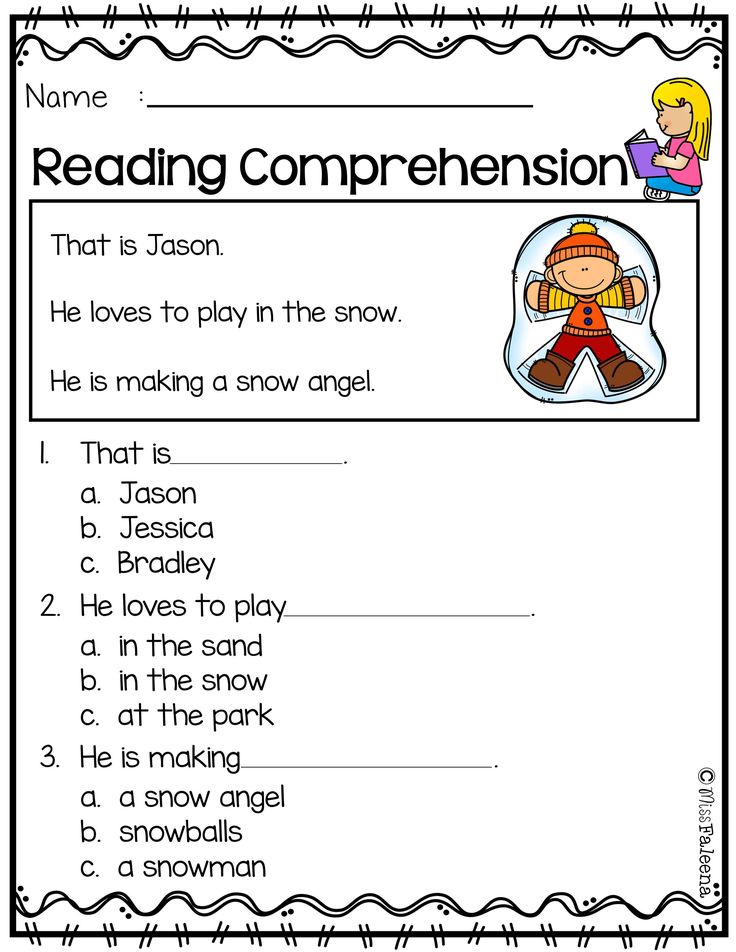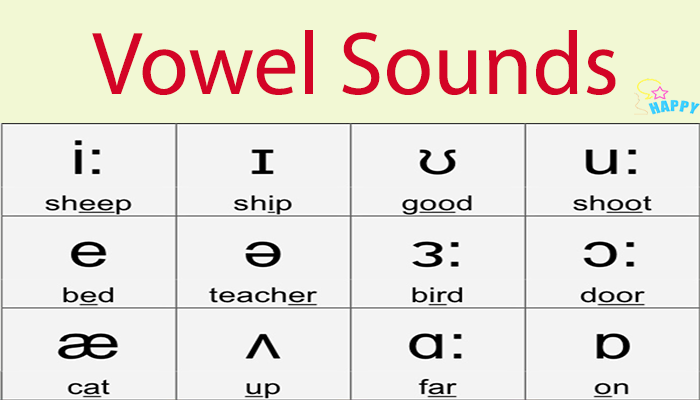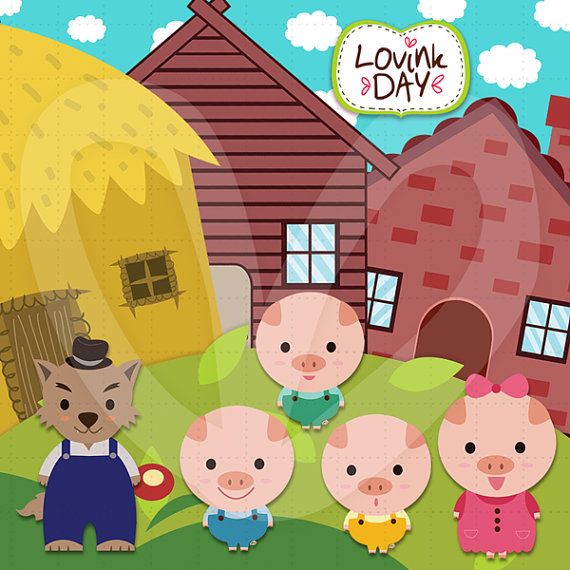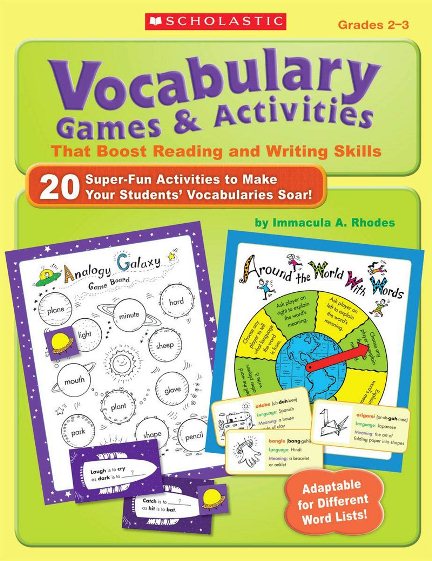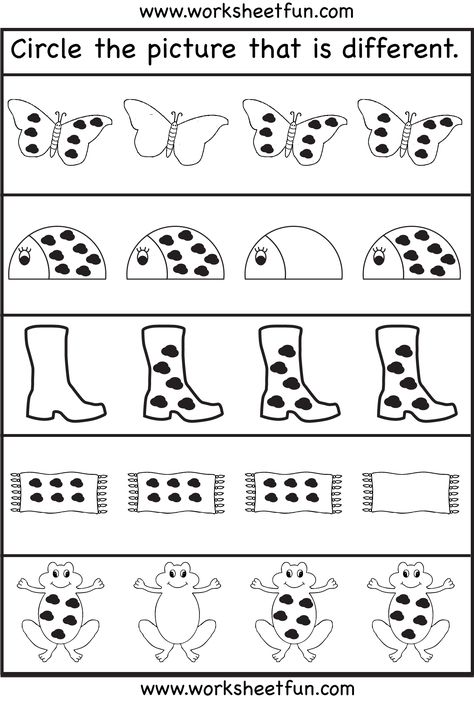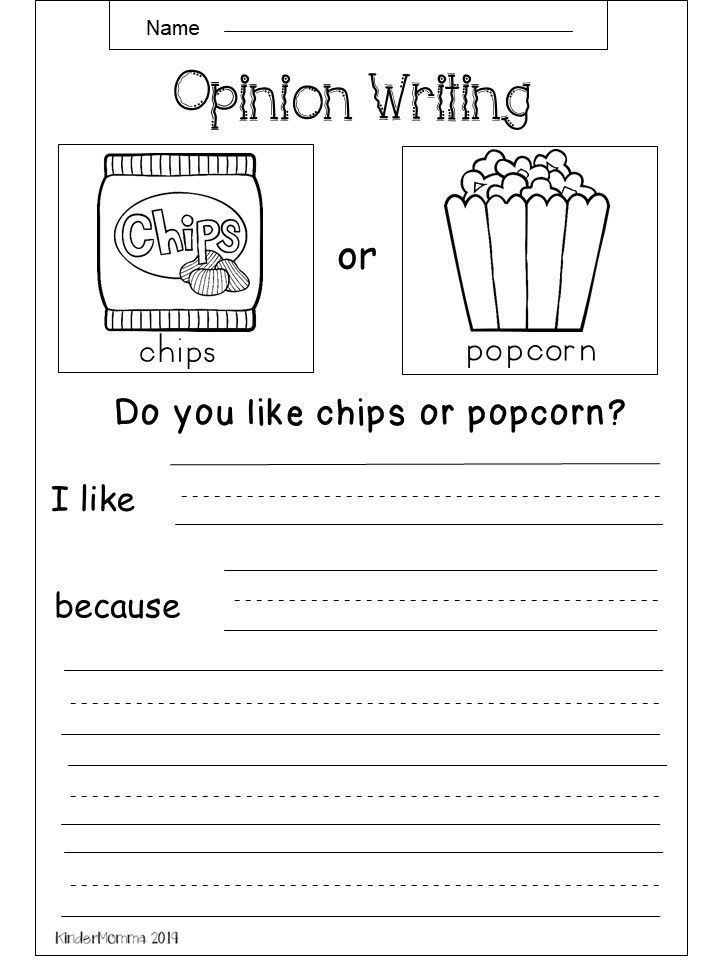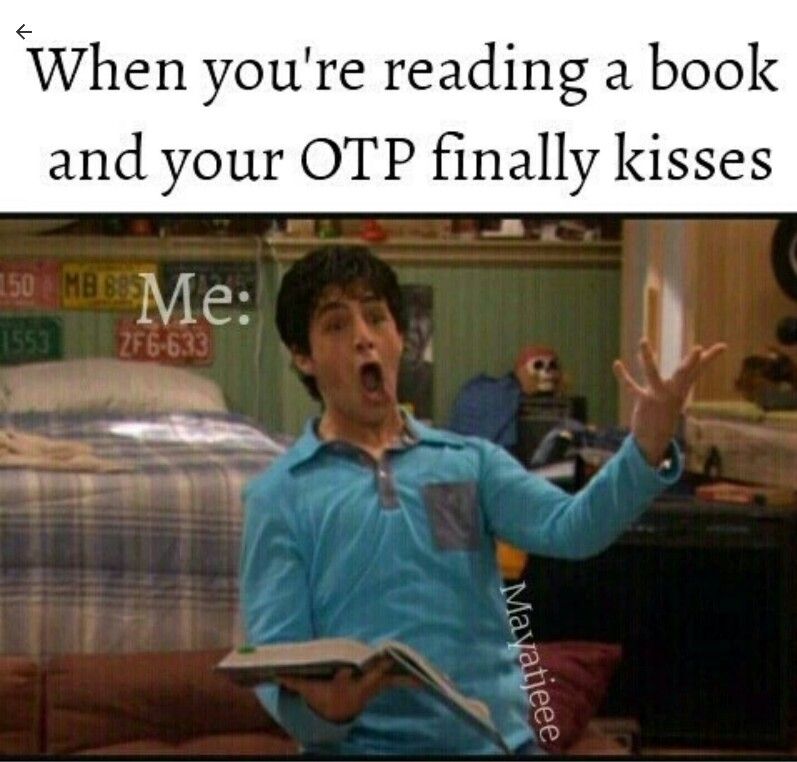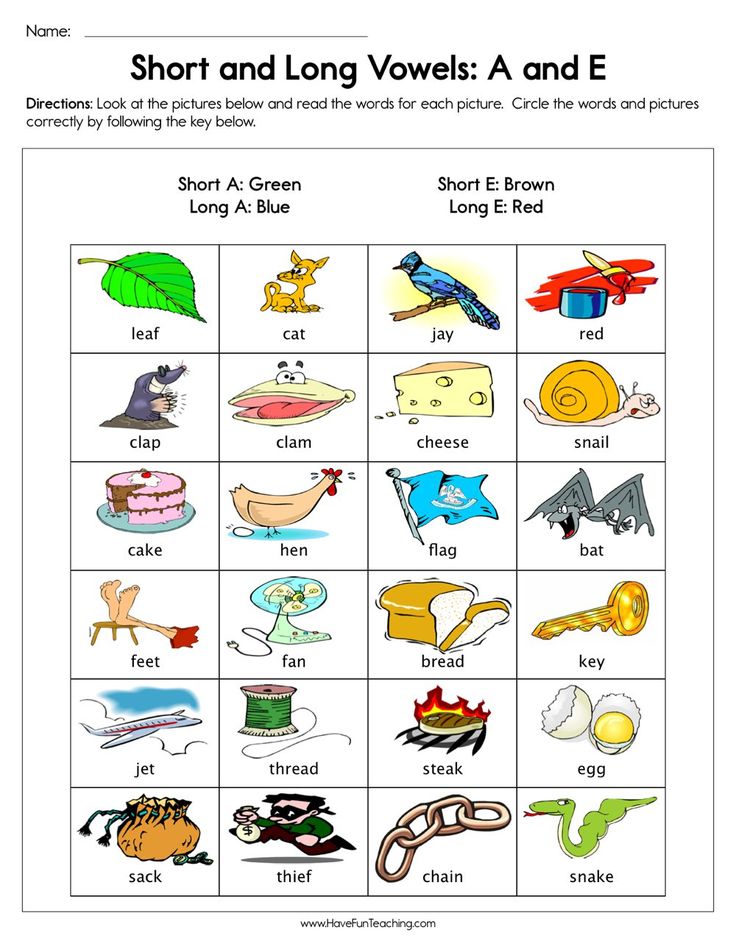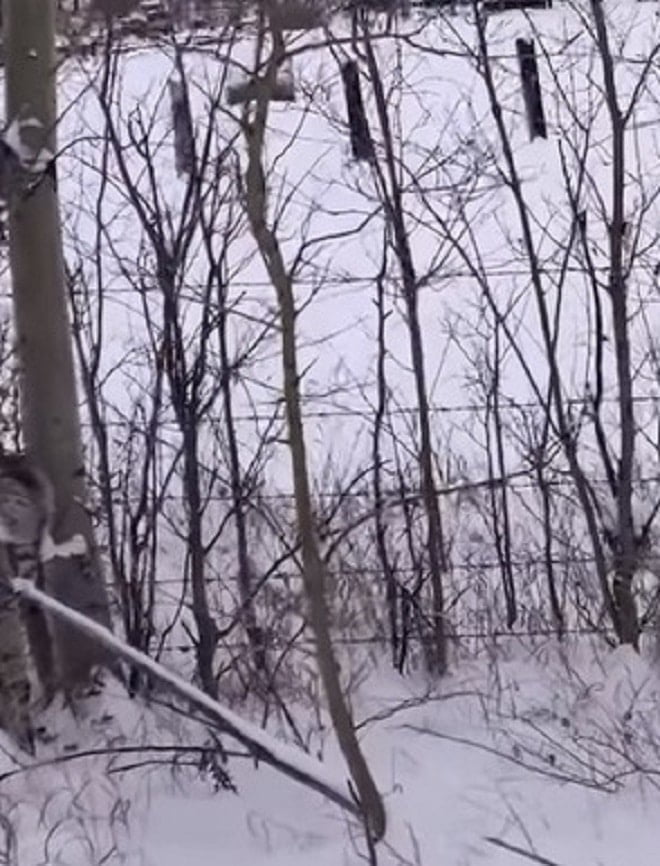Fun activities for comprehension
Second Grade Reading Comprehension Activities
Second graders are some of the most enthusiastic readers out there. They are transitioning from the basics into readers looking for meaning. As they build upon their comprehension skills, they are beginning to make connections to themselves and the world at large. These second grade reading comprehension activities will help your students dig deeper into texts on their own as well as with their peers.
1. Build a pyramid.
This idea was born out of one teacher’s students’ eternal love for constructing cup towers at any opportunity! The cups are coded with symbols to represent different story elements. After reading their leveled text, students share each story element while building their cup pyramid from the bottom up. They can then record the story elements on the matching graphic organizer.
ADVERTISEMENT
Learn more: Teach Outside the Box
2. Clip together a reading strategy fan.
Modeling is the best way to guide students through reading comprehension strategies. But unless they’re actively participating in the process, they simply won’t retain enough of the strategy to make any meaningful difference in their own independent comprehension of text. That’s where these strategy fans come in. The link below shows how this teacher uses the cards in her class.
Learn more: Organized Classroom
3. Use a volcano graphic organizer.
Demonstrate how to draw a simple volcano shape, divided into three sections, and have students draw one in their reading journal. After reading the first few pages of the story, ask students to write first impressions at the base of the volcano. This is also a good place to make predictions about where they think the story is going. At about the halfway point, have students write what they think and how they think the story is changing. Once they have finished reading, they will write what they think the story is really trying to teach them and what they took away from the story at the top of the volcano.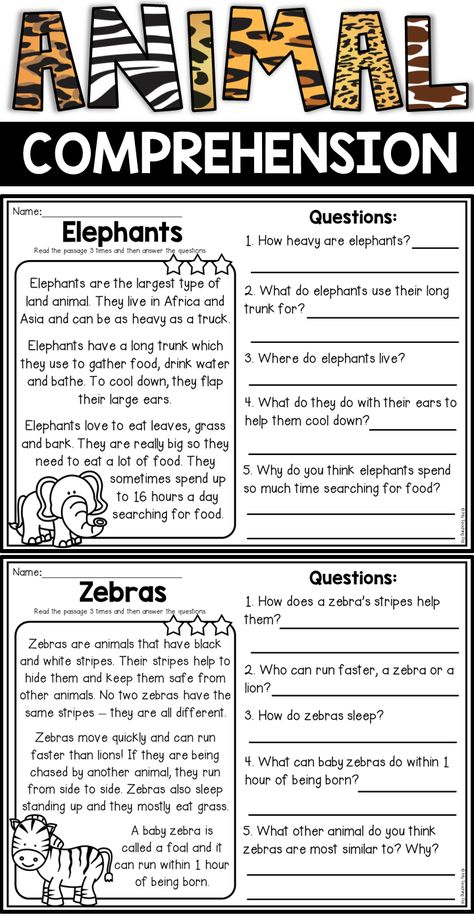
Learn more: Student Treasures
4. Compare characters.
Encourage your students to think more deeply about the characters in a story. In the head of each figure, ask students to write a character’s name. Then have them write specific attributes about the character in the torso section. In the circle between the characters, have them write shared characteristics between the two figures.
Learn more: Florida Center for Reading Research
5. Construct a comprehension cootie catcher.
Once the bane of classroom teachers, cootie catchers have become a novel way to practice skills that kids can get excited about. This free download from the Classroom Game Nook includes three versions with questions about characters, setting, plot, and more.
Learn more: The Classroom Game Nook
6. Put on a retelling glove.
Retelling is a vital skill for young readers to work on to help them understand what they are reading. These gloves are a snappy accessory with labels that you can easily change.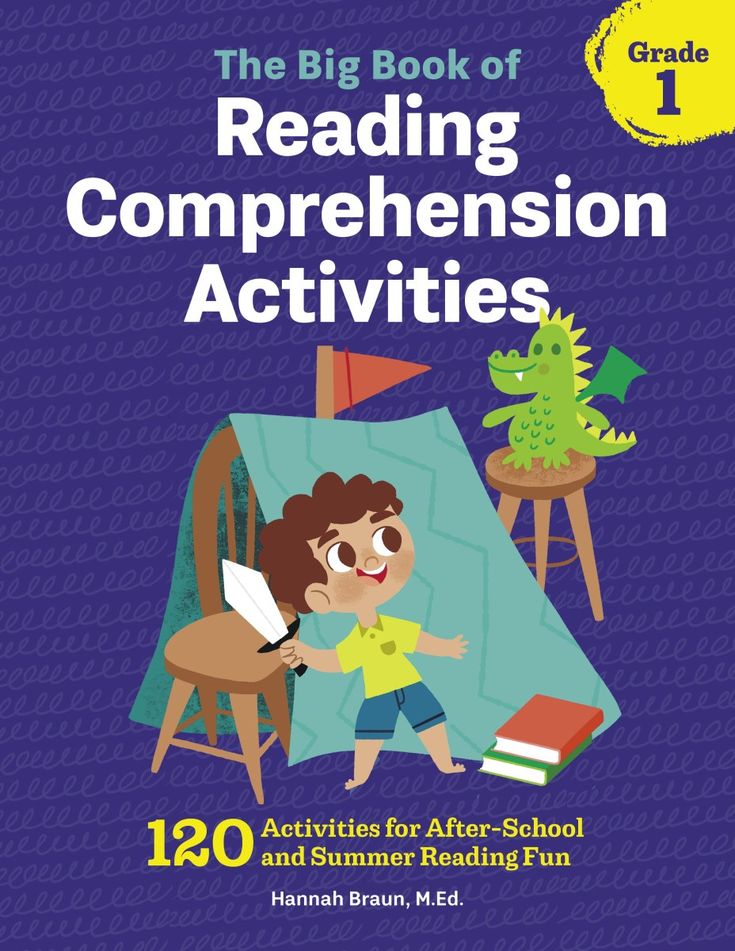 For fiction retellings, you can include setting, characters, problem, events, and solution. For nonfiction retellings, you can include main idea and supporting details. At the bottom of the glove, you can focus on making connections.
For fiction retellings, you can include setting, characters, problem, events, and solution. For nonfiction retellings, you can include main idea and supporting details. At the bottom of the glove, you can focus on making connections.
Learn more: One Giggle at a Time
7. Create a Wanted poster.
This free lesson from Education.com is a fun writing and drawing activity that has students take what they know about the bad person in the story and turn the details into a colorful Wanted poster.
Learn more: Education.com
8. Roll and chat your way to understanding.
If you’re looking for fun second grade reading comprehension activities that work well for stations or small-group work, try Roll & Chat. Players take turns rolling dice and answering questions about their reading.
Learn more: Playful in Primary
9. Toss a story ball around.
Kids will love this version of toss using a beach ball customized with questions that can be used for any reading passage. It’s a great activity for review or when you want to keep the learning going, but your kids need to get up and move.
It’s a great activity for review or when you want to keep the learning going, but your kids need to get up and move.
Learn more: Coffee Cups and Crayons
10. Follow a yellow brick road.
This fun lesson is another way to work on retelling skills. Print out these free story-element cards. Then, lay them out to create a road. As students hop from one yellow “brick” to the next, they retell the story.
Learn more: Cara Carroll
11. Make a shutter book.
This lovely foldable book is a great way for students to show their understanding of story elements in a colorful way. This is a great guided reading project to go along with a read-aloud.
Learn more: Upper Elementary Snapshots
12. Make book talks a regular part of your literacy block.
Book talks are a great way for students to demonstrate their reading comprehension. But sometimes when students get up in front of others, they’re not quite sure what to talk about. Download these adorable topic cards to guide students as they tell their classmates about what they are reading.
Learn more: Teacher’s Takeout
13. Celebrate the joy of reading with Flashlight Fridays.
I can’t think of a better way to end the week than implementing Flashlight Fridays into your ELA block. The students absolutely love reading in the dark and out of their desks. Add to the fun by allowing them to bring in cozy blankets and their favorite squishy!
Learn more: Flashlight Fridays
14. Implement Kagan Cooperative Learning Strategies.
When it comes to cooperative learning and active engagement, Dr. Spencer and Laurie Kagan are the ultimate masters. My personal favorite Kagan strategy is called “Stand Up, Hand Up, Pair Up.” Using this strategy, students are out of their seats and mix around the room. When they are signaled to stop, they find their nearest peer, partner up, and discuss whatever topic you choose.
Learn more: Kagan Publishing
15. Toss around reading comprehension cubes.
These are great conversation starters that will encourage your students to discuss different aspects of a story with their classmates.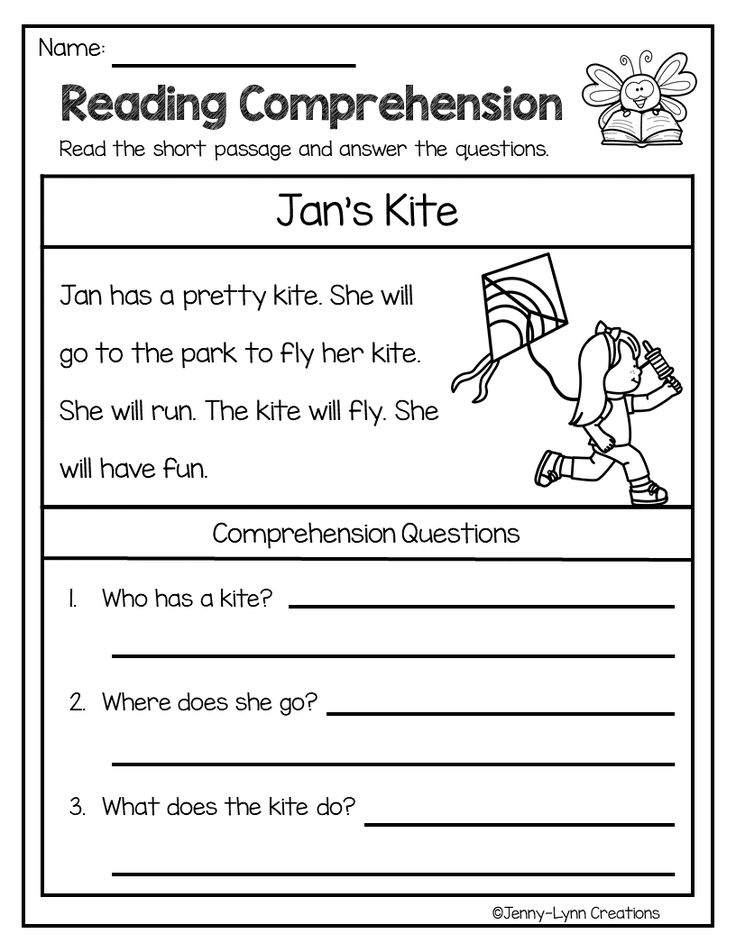 Use them in centers, small groups, or as a whole-group activity.
Use them in centers, small groups, or as a whole-group activity.
Buy it: Reading Comprehension Cubes at Amazon
16. Make a story-retelling paper bag book.
These cute booklets are easy to make and focus on important story elements. Your students will have so much fun making them, while honing in on those important ELA skills.
Learn more: Comprehension Connection
17. Create a lap-book-style book report.
Lap books are another creative way to put thoughts to paper in writing, while still fostering those artistic vibes. Use this as a whole-group assignment after a read-aloud, or have students make one after reading a book independently.
Learn more: Cara’s Creative Playground
18. Complete a story element map.
Students can handwrite their ideas or draw pictures describing each story element with this handy story map template. Kick things up a notch by making a double-sided copy to allow students to both write and draw their ideas!
Learn more: Katie Byrd
19.
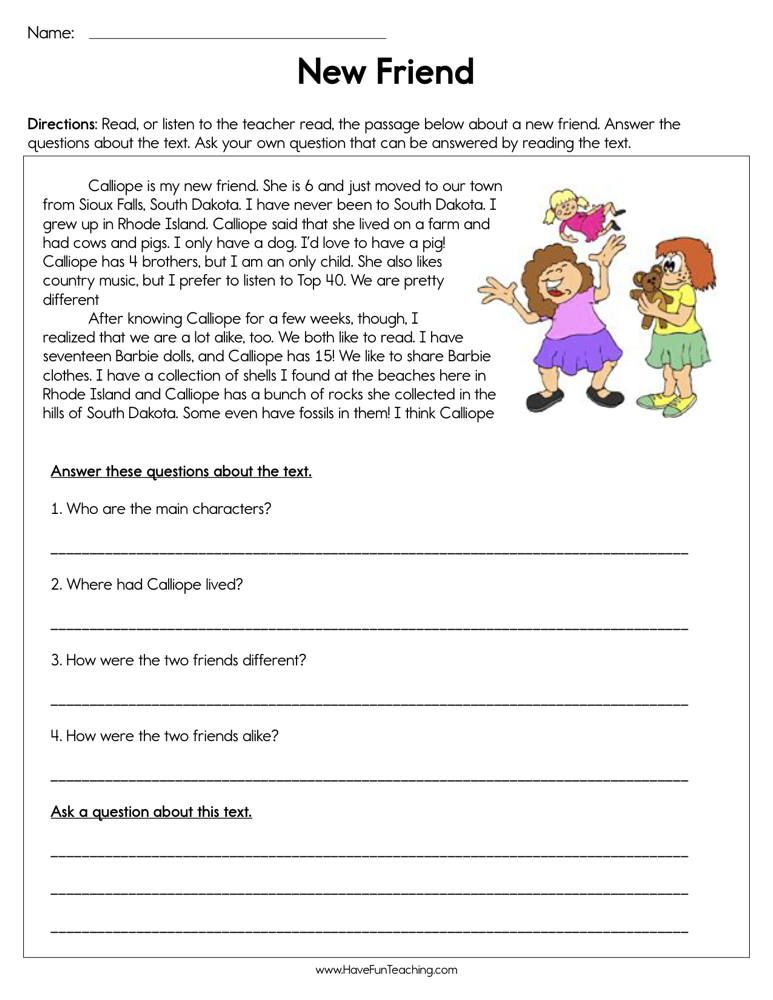 Play a storytelling-themed board game.
Play a storytelling-themed board game.Players draw random story elements and use them to tell a tall-tale type of story. With five different ways to play, it is easy to reach all types of learners and learning styles with this adaptable and fun game.
Buy it: Tall Tales Storytelling Board Game on Amazon
20. Hold a Book Character Day.
Book Character Day is one of those second grade reading comprehension activities that kids will remember forever! It gives them a chance to show how much they really know about one of their favorite characters. Encourage them to dress as their character and carry props that are part of their story. Maybe they’d even like to act like and talk in the voice of their character. Be sure to set aside time for each student to tell their classmates about the character they chose and why.
Learn more: Shann Eva’s Blog
If you like these second grade reading comprehension activities, check out our favorite second grade books.
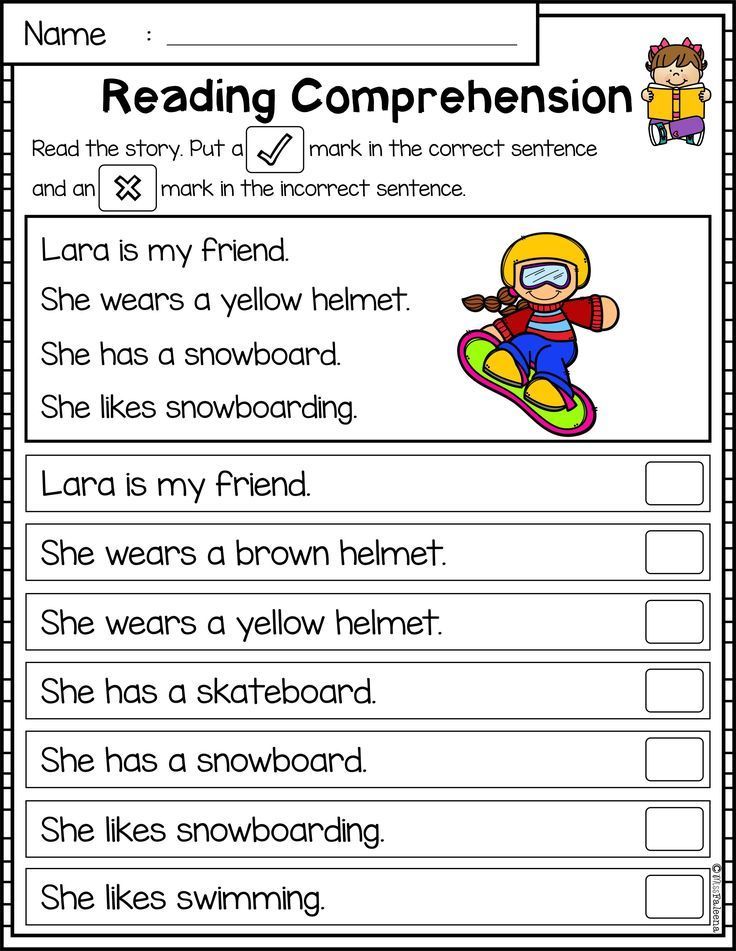
Plus, get all the latest teaching tips and tricks by signing up for our newsletters!
11 Free Reading Comprehension Activities For Students
There can be a hundred teachers in a room and ninety-nine of them will have different ideas on how to help with reading comprehension. Some of them might argue that rigorous testing is the best methodology, whilst others will argue that regular pop quizzing is the best way to go. Truth be told, there is no "one" exact way to ensure that your students understand what they are reading. Instead, it's best to adopt a variety of different solutions.
Here is a list of the top 11 reading comprehension activities. You can use them to introduce new reading comprehension techniques, or simply to check your students’ understanding so far. They are all fun, innovative ways to approach reading comprehension and demonstrate your students' skills.
1. Roll & Chat Dice
This fun activity includes lots of comprehension questions to check your kids have effective reading comprehension skills.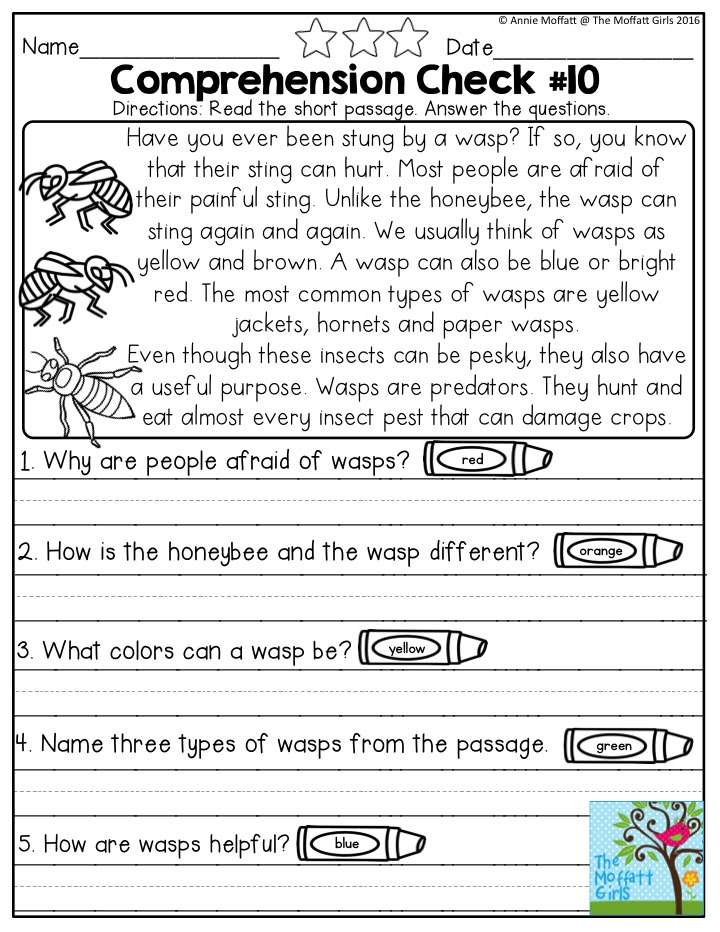 You can adapt and change this for any student, ensuring that they are reading at grade.
You can adapt and change this for any student, ensuring that they are reading at grade.
Learn more: Teachers Pay Teachers
2. WANTED Poster
You can use this activity not only to ensure that your students have basic story understanding but also to demonstrate they know character traits. It can also be applied to a wide variety of texts, too. Try including some questions about characters and story detail for even more teaching of comprehension.
Learn more: Education.com
3. Story Cheeseburger
This is unfortunately not as delicious as it sounds! You can use this activity to check simple reading comprehension of story structure, as well as a more advanced understanding of story aspects. Try displaying this colorful reading comprehension activity to brighten up your classroom, too!
Learn more: Unique Teaching Resources
4.
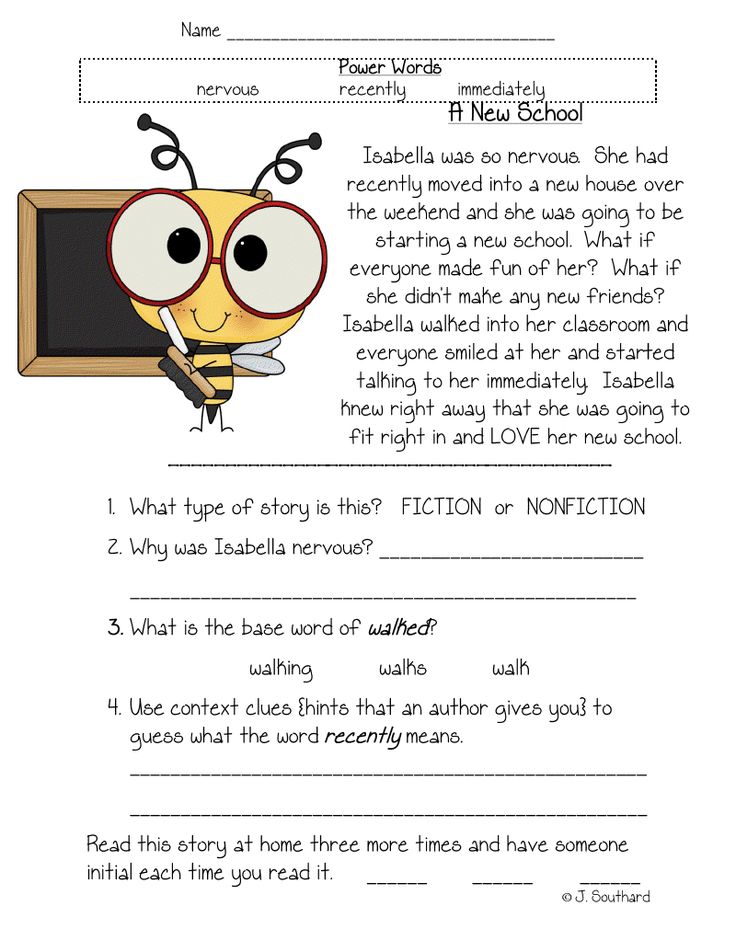 Reading Comprehension Worksheets
Reading Comprehension Worksheets This website has plenty of reading comprehension worksheets that you can print out and use for a reading passage. You can use them to teach reading strategy as part of a typical reading lesson or to have some book talk.
Learn more: K5 Learning
5. Make a Timeline
You can use this research-based teaching strategy for any non-fiction story to help demonstrate reading to knowledge skills. Ask relevant student questions about the topic of study to help expand on their knowledge and sequence events.
Learn more: Education.com
6. Yellow Brick Road Retelling
This is an excellent reading project to get your kids involved in active reading, instead of just being passive. You can use it to talk about many elements of the story and a narrative text. You can differentiate it according to your students' reading skills, from simple story elements like the story title to more developed ideas like meaning during reading.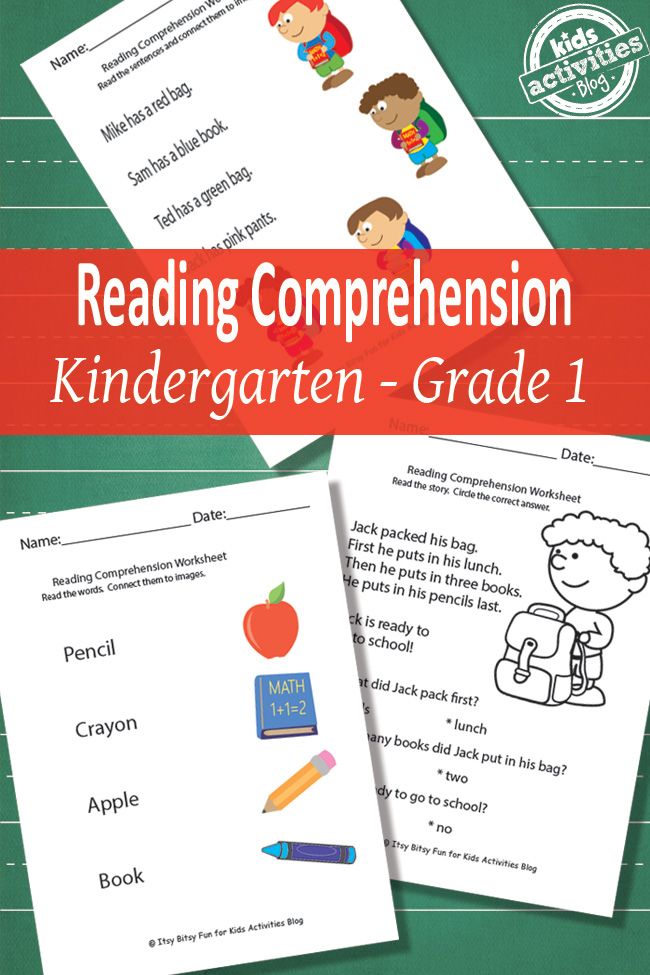
Learn more: Just Cara Carroll
7. Anticipation Guide
This is a perfect pre-reading activity to get your students to understand the reading process in more detail. They will need to make some predictions about the story and share their opinions on some of the ideas that the book presents. You can also return to this guide after reading to demonstrate how their reading comprehension has developed.
Learn more: Reading Rockets
8. Question Ball
You can get really creative with this activity by getting the whole class involved to answer some comprehension topic questions. You can even use it to revise key quotations or as part of a reading selection. Definitely one for student engagement!
Learn more: Coffee Cups and Crayons
9. Lego Retelling
This one is more suitable for a picture book with younger learners, but it can also be used by upper-grade students, too. Your kids will have to use the individual Lego pieces to build key scenes from a text, then explain what they have built.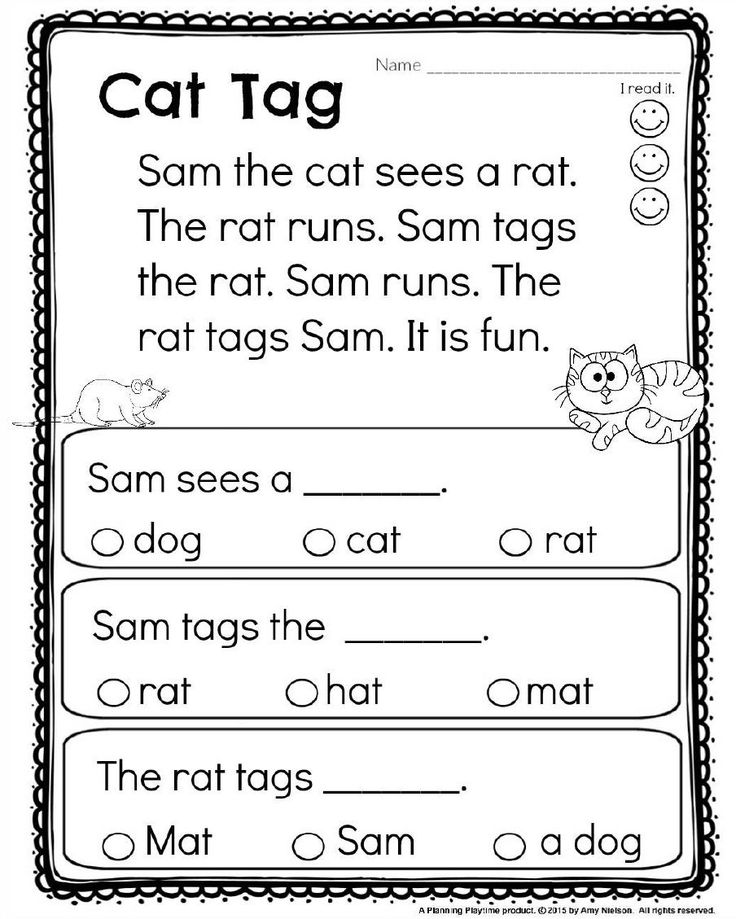 They can write down what they have said, too, to show that they have really understood the text well.
They can write down what they have said, too, to show that they have really understood the text well.
Learn more: The Educators Pin On It
10. Story Telling Bracelet
Another more hands-on activity, the teaching procedure of this involves assigning each color of the bracelet to a particular part of the text. For example, yellow, green, and blue all represent plot events. This is particularly useful to create a sequence of events and make story connections.
Learn more: Growing Book By Book
11. Reading Cheat Sheets
Need to help your students understand critical reading skills? Use these cheat sheets to provide them with expert details and things to keep in mind while they read a text. This includes key skills like looking at the cover, thinking about the content-area text, and other discussion questions to consider during the reading-thinking process.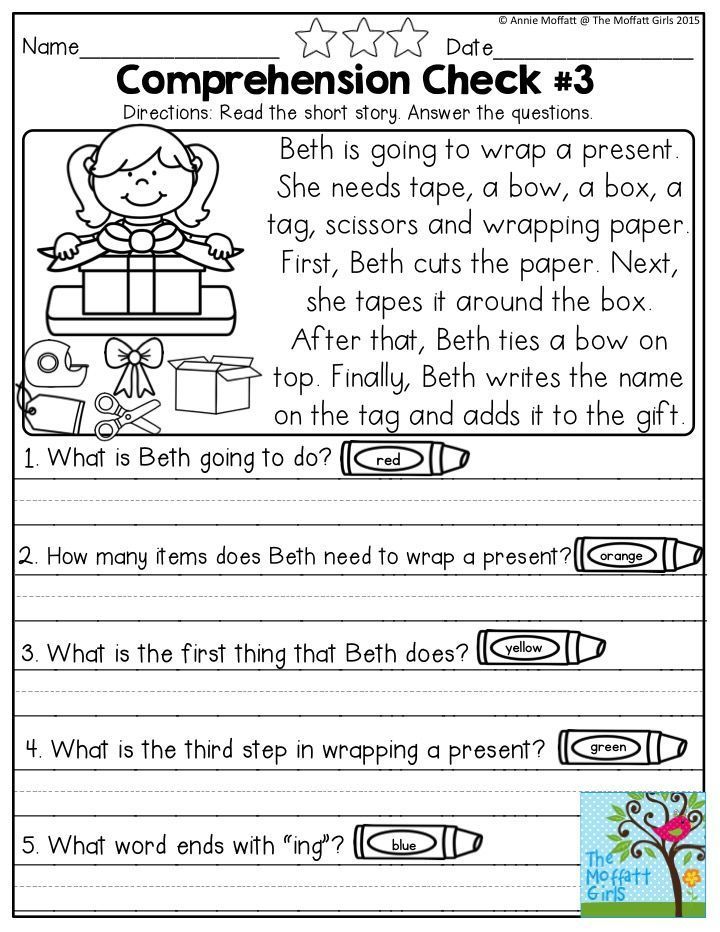
Learn more: Teachers Pay Teachers
These are just a few of the best ways to make reading more accessible for your learners. The majority of these activities can be expanded upon to meet the specific needs of your readers, whether that be sequencing events or providing a detailed analysis of character.
Frequently Asked Questions
What are comprehension activities?
Comprehension activities are activities or games that can be used to help your students to demonstrate what they know about a text. This usually covers but is not limited to, setting, plot, and character. Comprehension activities can be expanded to include other ideas too, like the meaning of the text, and can go beyond the details included within the text, such as in terms of contextual information surrounding the creation of the book.
What is the best way to teach comprehension?
Unfortunately, there is no definitive "best" way to teach comprehension to your kids, as each student is different and will respond to different activities.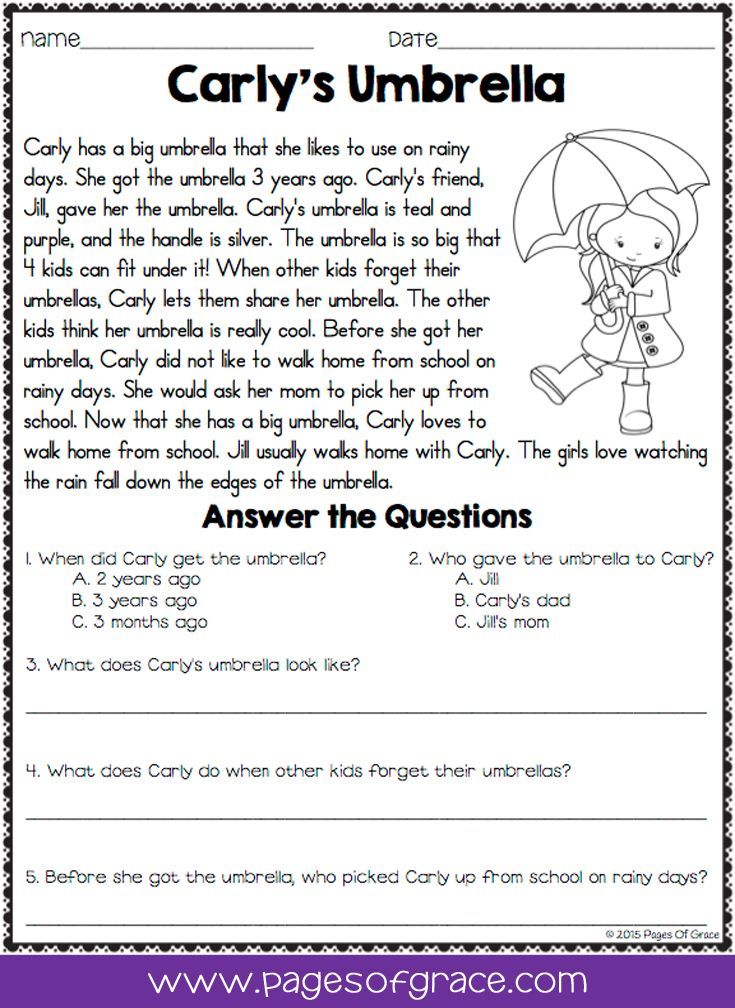 However, one thing that will definitely work is to make comprehension an enjoyable process. Try using the activities above to help with this and avoid simply completing tests or quizzes, as these will not make your student engaged.
However, one thing that will definitely work is to make comprehension an enjoyable process. Try using the activities above to help with this and avoid simply completing tests or quizzes, as these will not make your student engaged.
How can I improve my comprehension?
Try to go beyond simple ideas of comprehension. Your basic comprehension of a text should include the key events (or plot), the setting (where and when the story happens), and characters (the people or things that the text is about). You should try to expand beyond this by thinking about the meaning of the text. What message was the writer trying to put across? Reading comprehension goes beyond the words on the page - you need to think about the writer's craft, too.
What are the 3 main types of reading strategies?
The key reading strategies that you will likely encounter are scanning, skimming, and detailed reading. Scanning involves looking for specific information in a text, such as a keyword or detail.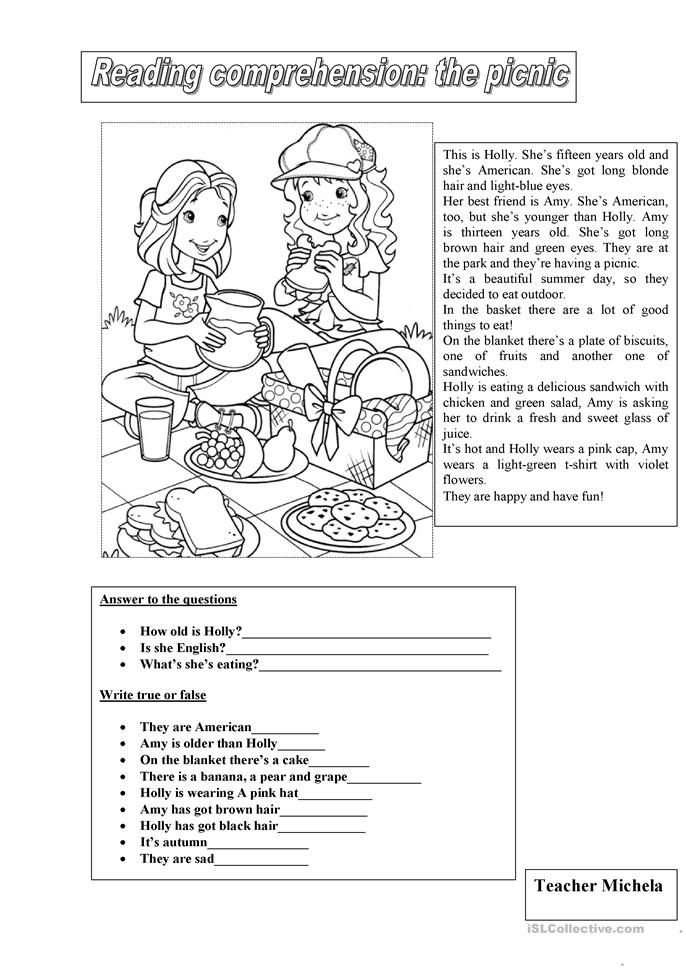 Skimming is slightly more in-depth as it is about understanding the main idea of a text by reading small chunks of the passage. Detailed reading is the slowest reading process but is the one that can help you get the most information from a text. Using this last strategy, your kids will understand approximately 80% of the text. Even so, each of these strategies is vital for teaching your students how to read effectively for information.
Skimming is slightly more in-depth as it is about understanding the main idea of a text by reading small chunks of the passage. Detailed reading is the slowest reading process but is the one that can help you get the most information from a text. Using this last strategy, your kids will understand approximately 80% of the text. Even so, each of these strategies is vital for teaching your students how to read effectively for information.
Games and exercises for the development of speech for children from 4 to 7 years old
Games and exercises for the development of speech for children from 4 to 7 years old
The first block
We develop understanding and use of grammatical structures in speech
1.Learning to understand the two-step instructions
Place a row of objects in front of the child. The child completes your tasks:
Show the doll with a ruler, and then the ball.
Show the plate and cup with the doll.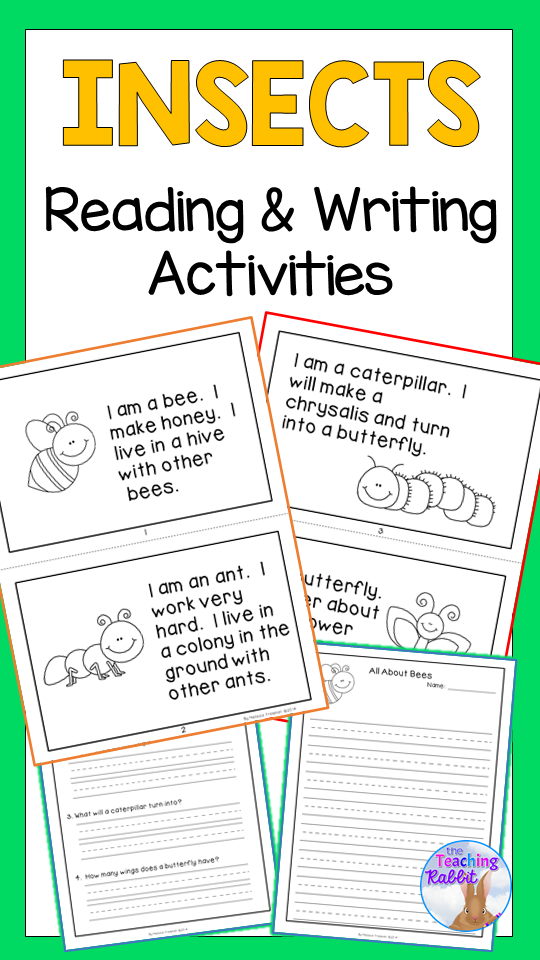
Show a book with a pen and then bring it to me.
Show a pen with a book, take the ball and put it next to the cup.
Bring me a cup and show me the plate with a ruler.
If the child showed correctly, ask: “What did you show? What did he show?"
According to your instructions, the child should draw on paper:
2 circles and 3 sticks.
3 blue squares and a red circle.
Yellow triangle and 3 blue circles.
2 sticks on the left and 5 on the right.
You give tasks once, and if the child does not remember, repeat again. In case of difficulty, the instruction can be divided into 2 parts: first, the child draws 2 circles, then 3 sticks with your hint. It is very important to teach the child to pronounce his actions, encourage him to do so.
- Selection of words-names of objects using counting sticks.
For each answer, the child receives a token (or a counting stick).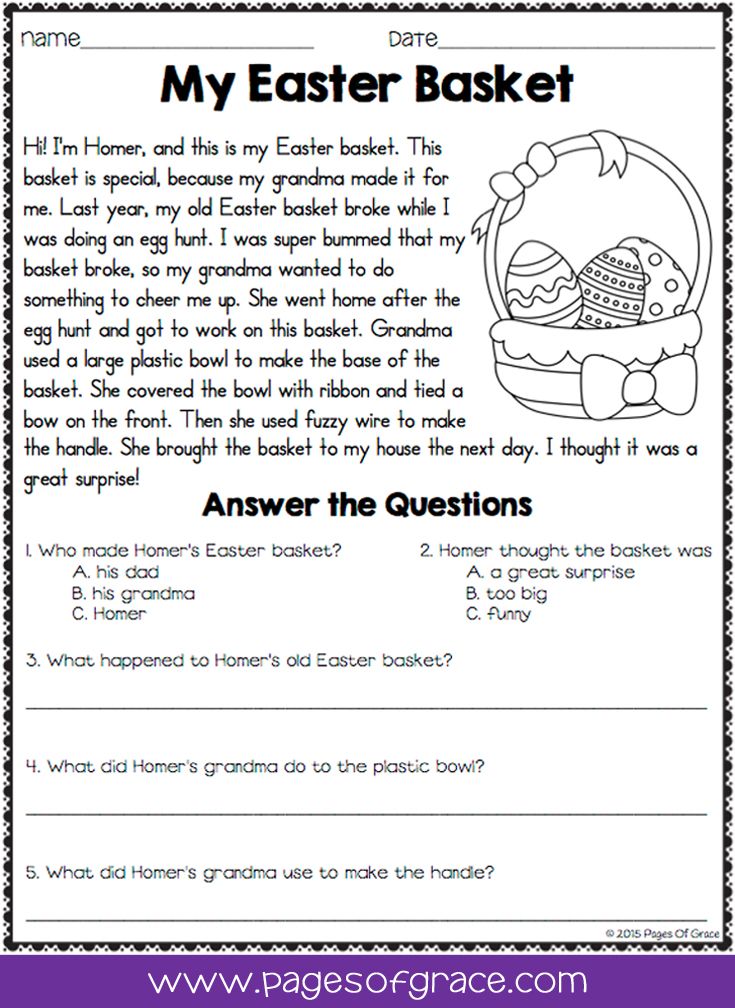
What can be opened? (Answer in full sentence: "You can open the door. You can open the jar. You can open the book.")
What can be lifted?
What can be pushed back?
What can you get?
Encourage the child's imagination.
- Learning to understand and use prefixed verbs in speech.
Prefixed verbs are verbs formed with the help of prefixes.
Your task is to consolidate the child's ability to feel the difference between the verbs "driving", "drove", "moved off", "moved", "drived around". Many children do not distinguish between these verbs by ear and in meaning. Play a car game. Have your child do the actions you say, “Make the car drive into the garage. I drove around the house, crossed the road, ”etc. All buildings made of cubes must be prepared in advance. When the child confidently follows your instructions, you yourself make the same movements with the machine. And the child answers the question: “What did the machine do?” -
"The car drove around the house.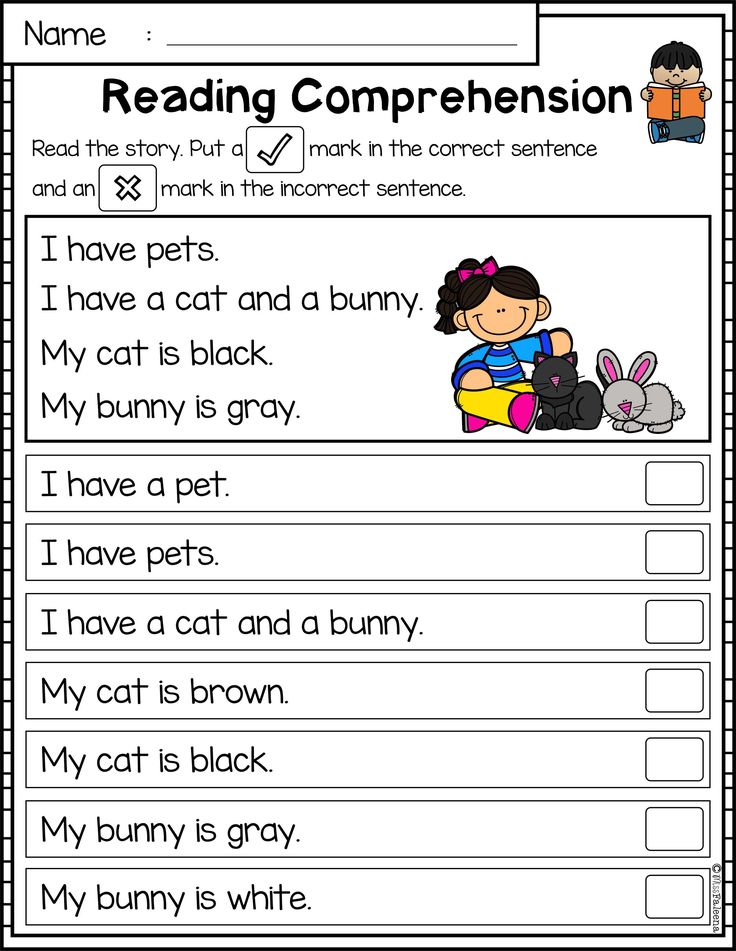 " If it's difficult, help the child. On the street, watch the transport (at the same time remember the names of the vehicles), what did the trolleybus, truck, dump truck, etc. do.
" If it's difficult, help the child. On the street, watch the transport (at the same time remember the names of the vehicles), what did the trolleybus, truck, dump truck, etc. do.
Similarly, play with the verbs “came up”, “passed over”, “passed over”, “entered”, “left”, “bypassed”. Ask the child “Do you think I will say the same words or different ones?” (bypassed, passed). The same with the verbs: “pour”, “pour”, “pour”, “pour”. All these actions are shown by you and the child. It is necessary that the child answers you in full sentences, or at least repeats them after you: to the question “What did I do now?”, The child answers: “You washed your hands”, and not in one word “washed” or “washed”.
- Learning to understand and use plural nouns in the genitive case.
Stick pictures in pairs, eg hundred-tables, house-houses, etc. At least 5 pairs. First, the child names these pictures (“This is a table, and these are tables”).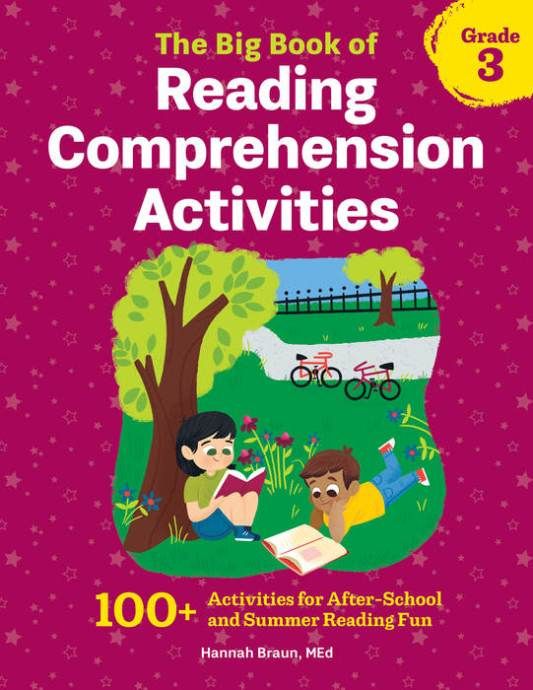 Pay attention to the child how the endings of words change.
Pay attention to the child how the endings of words change.
Game "One - many": the child names the pasted pictures (one table - many tables, one bucket - many buckets).
Then play with the ball. You throw the ball to the child and say any word in the singular. The child returns the ball back and changes the word. Adding the word "many": tree - many trees, leaf - many leaves, closet - many closets, bee - many bees, chair - many chairs. Sparrow - a lot of sparrows, a bucket - a lot of buckets.
Game "Correct the mistake": you say a deliberately wrong sentence, and the child hears the mistake and corrects it.
There are many trees in the forest.
There are many tigers in the zoo.
The kid ate a lot of sweets.
There are many pencils in the box.
There are many books in the library. (Some sentences are better not to distort, let the child think).
Constantly monitor the use of plural nouns in the genitive case in the child's speech. This grammatical category usually causes many difficulties.
This grammatical category usually causes many difficulties.
5. We learn to understand and use certain prepositions in speech.
Prepositions TO AND FROM
Find the pictures. Suitable in meaning to the prepositions IN and FROM. Ask the child to show the picture that can be said about with a small word "B". And then - with a small word "FROM". You can use the term "preposition": "The fish swim in the aquarium", "The girl looks out of the window."
The child makes sentences on these pictures, highlighting prepositions with his voice: "The boy left the house." Ask them to think about how these prepositions differ (they are opposite in meaning).
Instruction game. The child completes your tasks, each time voicing what he did:
Put the ball in the box. (I put the ball in the box.)
Put the spoon in the pot. (I will put the spoon in the saucepan.)
Take a handkerchief from your pocket. (I took out a handkerchief from my pocket).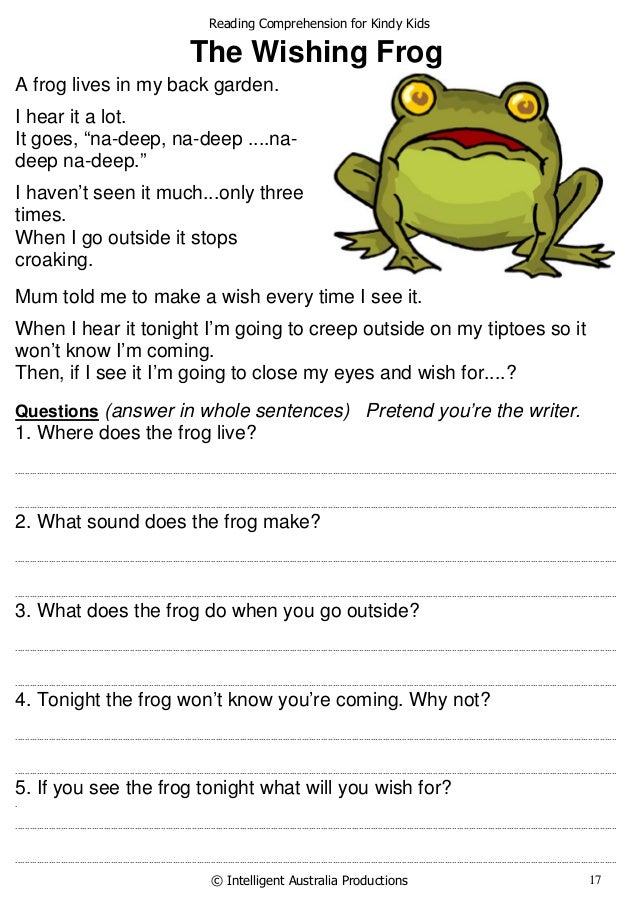
Talk about animals and birds. The game "Who lives where?". The child, looking at the pictures in the book with animals and birds, makes sentences:
The bear lives in a den.
The wolf lives in a hole.
The squirrel lives in a hollow.
The starling lives in the birdhouse.
Watch for the use of the preposition B in the child's speech, this preposition often falls out of sentences. Insist on an exaggerated pronunciation of the preposition B during your classes.
Read to the child any poem or passage, for example, S. Mikhalkov “It was in the evening ...” Ask the child to listen carefully, and then name those sentences where he heard the prepositions IN and FROM (for example; “And from our window, Red Square is visible ... And we have gas in our apartment ... And you?). Choose any of your choice.
Prepositions FOR - BECAUSE OF
Game. The child claps his hands only when he hears the preposition BECAUSE. You use a series of prepositions: ON, UNDER, IN, BECAUSE OF, FOR, TO, FROM, FROM UNDER…
Following instructions.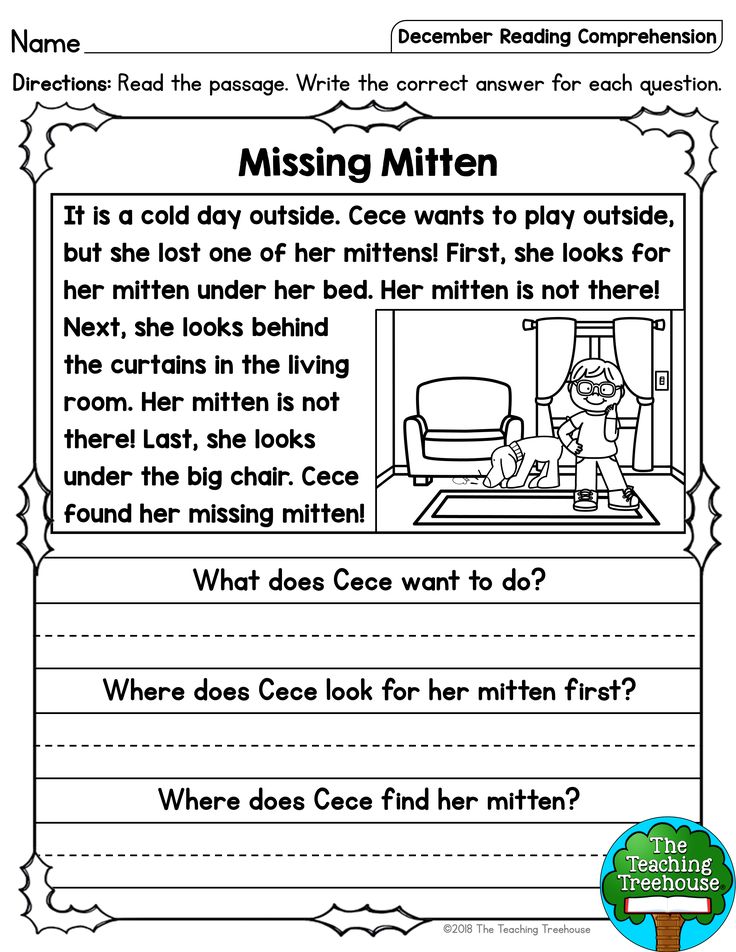 You give the child the task to put one object after another; “Hide the ball BEHIND the car. Where is the ball? Then you give the task to get the ball from behind the typewriter. Ask: "Where did you get the ball?". Play with other toys the same way.
You give the child the task to put one object after another; “Hide the ball BEHIND the car. Where is the ball? Then you give the task to get the ball from behind the typewriter. Ask: "Where did you get the ball?". Play with other toys the same way.
Exercise "Insert the missing preposition". You pronounce a sentence by skipping (not naming) a preposition. The child thinks which preposition is suitable and says the whole sentence: “the ball rolled up ... the closet”, “the hare looked out ... the tree”, “the boy hid ... the door”, “the sun appeared ... thuja”, etc.
6. Learn to understand and correctly use masculine verbs in the past tense.
Find pictures of a boy and a girl; your child comes up with action words that refer first to the boy in the present tense: “Think about what the boy is doing now?” (walks, sleeps, plays ...). “Now imagine what he does yesterday?” (Walked, slept, played). Also practice with a picture of a girl. Draw the child's attention to how the ends of the words change: walked - walked, slept - slept, played - played.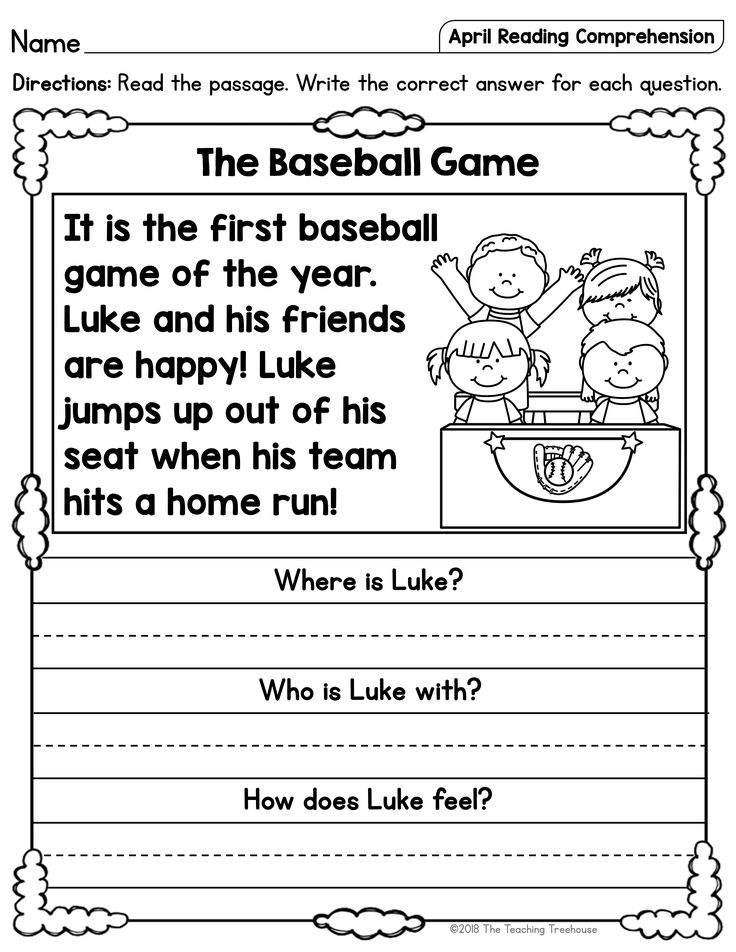 All sentences are spoken in full. You can use dolls instead of pictures - a boy and a girl.
All sentences are spoken in full. You can use dolls instead of pictures - a boy and a girl.
7. Learning to ask questions to pictures.
Game “Ask a question” based on pictures with a girl and a boy: “Let's play a game as if you are looking at the picture and don't understand what the girl was doing. Ask me and I will answer. How will you ask? (“What did the girl do?”, “What did the boy do?”). With subject pictures, practice asking questions “Who is this?”, “What is this? (apple, cat, bird, fish, notebook, table) depending on animation. Your task is to teach the child to consciously ask a question, to develop a sense of language. Encourage him in this work.
8.Learning to understand what a "suggestion" is.
Ask the child to name any word. Mark this word with a dash on a piece of paper. Also with 3-4 words. Get a series of dashes. “Now you spoke words, and I drew a diagram from your words.
Word - dash, word - dash.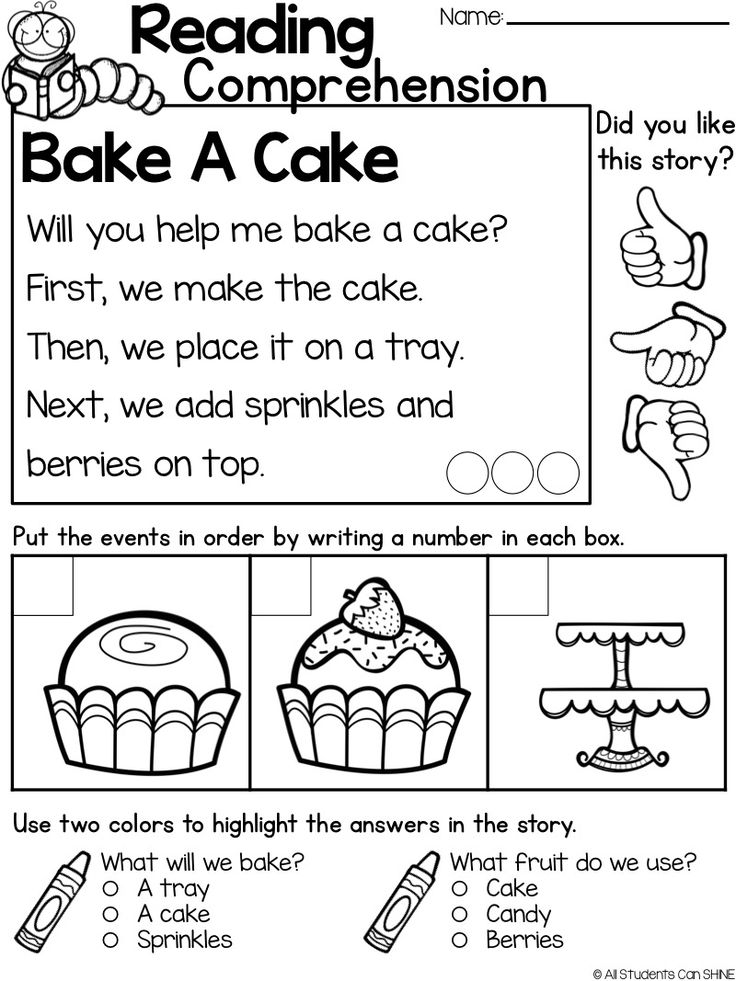 But when you name words not just like that, but with meaning, for example, you talk about something, then this is called a sentence. Make a sentence using this picture, and I will draw a diagram of it (for example, “Winter has come.” Scheme: _______ ... _______). The same - with a number of proposals.
But when you name words not just like that, but with meaning, for example, you talk about something, then this is called a sentence. Make a sentence using this picture, and I will draw a diagram of it (for example, “Winter has come.” Scheme: _______ ... _______). The same - with a number of proposals.
A game for developing the ability to speak in full sentences with the conjunction “to”. Put 6-7 different items on the table: scissors, soap, pencil, plasticine, spoon, hat, etc. First, you take any object, give it to the child and say: "I want you to take soap and wash your hands." Then the child takes any object and also asks you or a member of your family taking part in the game: "I want you to take scissors and cut paper."
9. Learn to understand and use cases correctly.
Take the doll. You tell a story about the girl Masha, and the child reproduces these actions, finishing the necessary word:
“Masha had a beloved ... (“doll,” says the child).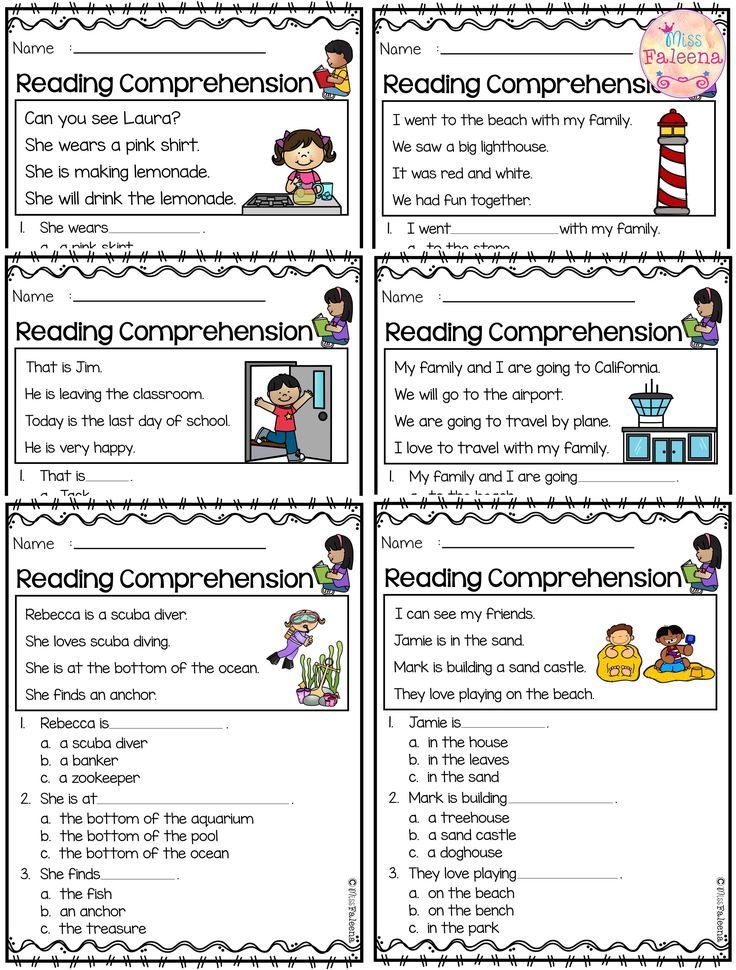 ”
”
“Masha often carried her … (doll) in a stroller.”
"Masha was combing the hair of her ... (doll)."
“Then Masha put her… (doll) to bed.”
“After sleep, she went for a walk with her … (doll).”
“Masha told all her friends in kindergarten about her … (doll).”
Be sure to draw your child's attention to how the same word changed in sentences. The child must say which word changed and how the end of the word changed.
Find pictures of animals in books. The child answers your questions:
Who did we see in the forest?
Who was approached close, close?
Who has many friends in the forest?
Who did we meet in the forest?
Who will we tell your friends about?
Who should not be offended in the forest?
Who has sharp teeth?
Who wouldn't they play with?
Who is often described in fairy tales?
You can come up with your own questions, compose a fairy tale, dream up. Draw your child's attention to how the ends of words change. Fix for yourself which case is most often used in the child's speech.
Draw your child's attention to how the ends of words change. Fix for yourself which case is most often used in the child's speech.
- Learning to use nouns with diminutive suffixes.
Match 15 small items (from Kinder surprises, Barbie set, for example) and the same number of large ones.
Task #1: “Show me where the table is? Where is the table?”, “Where is the ball? Where is the ball? Invite the child to listen to whether the words sound the same or differently: a chair - a chair, a house - a house. Remind your child that we speak affectionately about small objects.
Task №2: You are telling a fairy tale about a little dwarf” “Once upon a time there was a dwarf. And everything he has is small: he lived in a small house ”(show the house). “There was a little one in the house… what?” (the child looks at the toys and names the pieces of furniture: a table, a chair, a cabinet, a sofa; items of clothing, utensils). The more words the child can name, the better.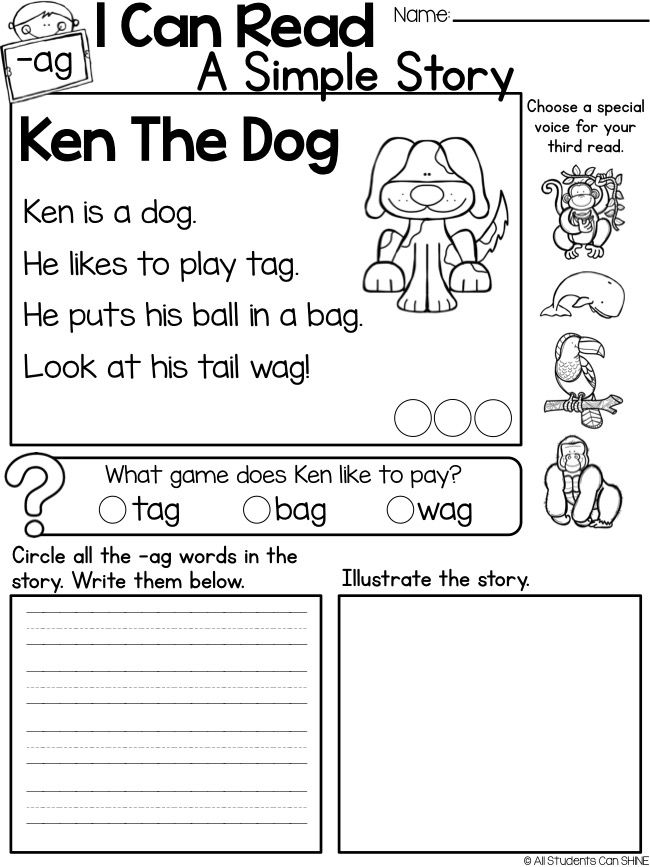
Say it kindly game
You and your child walk around the room. Everything that your hand touches. Turns into a small one. The task of the child is to correctly name this object or object: a cat, a window, a light bulb, a notebook, etc. If the answer is wrong, help the child pick up the word.
Game “Fix the mistake”
Ask the child to think about whether you will name the word correctly (also based on toys): shoes, chair, small table, bucket, spoon, house, etc.
- Learning to choose words with opposite meanings.
Play the game “Say the other way around” with your child.
Tell me. That you have a big hand, and what is his? (the child says "small"). Then ask them to say the opposite about other objects:
Old man - young man
New car - old car.
Clean - … Sick – …
Good - …0003
High - ... smooth - ...
Long - ... good - ...
fat - .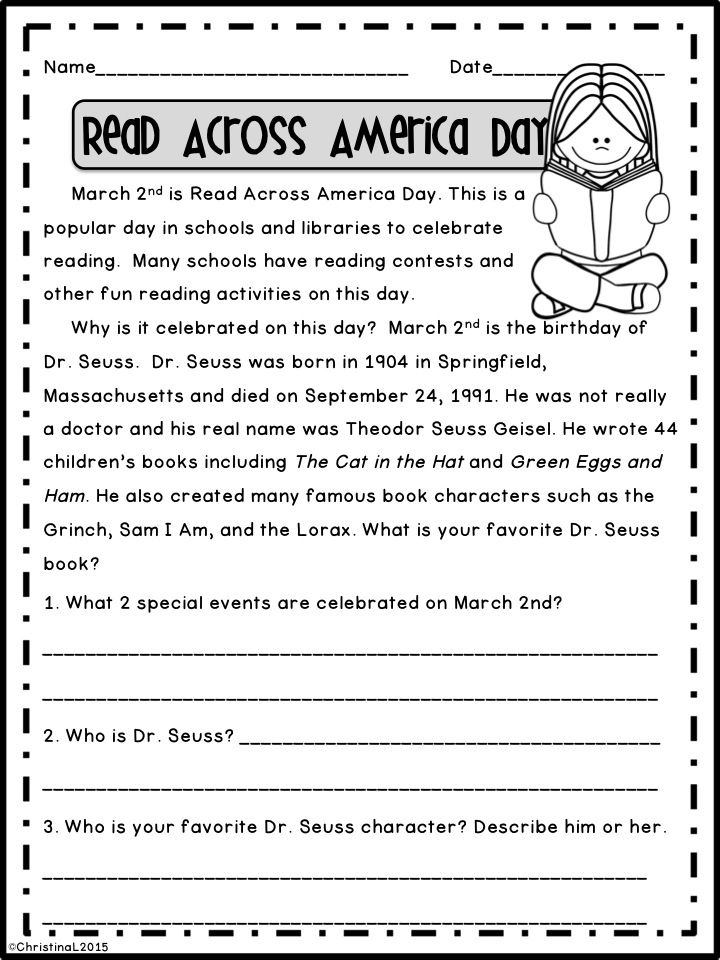 .. cold - ...
.. cold - ...
wide - ... funny - ...
10 class games that will teach the child to read quickly and without errors
how to teach how to teach child to read confidently, fluently, right? Interest and captivate! We offer a selection of games from the teacher, speed reading and memory development instructor Guzel Abdulova.
Gyuzel Abdulova, neuropsychologist, teacher, speed reading and memory development coach, head of the Eidos Center for Intellectual Technologies
These exciting games will not only arouse interest in reading, but also help develop memory, attention and the level of understanding of texts. Play - reading, read - playing!
"Racing"
What should be done? Invite the child to read his favorite poem several times, each time increasing the speed and power of the voice.
Purpose. The exercise significantly increases the speed of reading, improves reading technique and promotes the development of speech.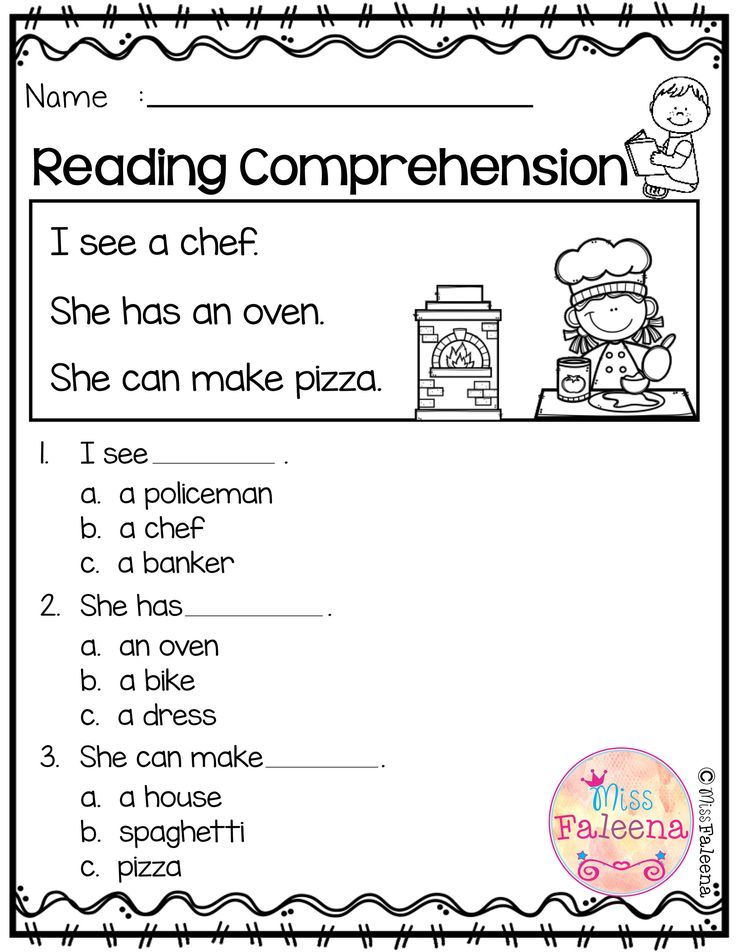
"Foreigner"
What should be done? We read the words, highlighting the last syllable, as if with a "foreign" accent. Reading text or columns of words. For example:
There is healthy mind in a healthy body.
Not the one who is RIGHT who is strong, but the one who is honest.
A tree is supported by roots, and a person is supported by friends.
And Vaska listens and eats.
Elbow is close, but you won't bite
The cuckoo praises the rooster for praising the cuckoo.
Alone in the field is not a warrior.
Purpose. This exercise helps children get rid of the habit of swallowing endings. It is quite tedious, so we complete it for 30 seconds.
"Voices"
What should be done? The task is to read the text in the form of a person or animal, cartoon or literary character. Discuss with the child how Baba Yaga or a mouse, a hare or a wolf would read this text.
Purpose. The exercise improves the reading technique, helps to captivate the child with reading, to show that it is fun and interesting.
"Funny pictures"
What should be done? For this exercise, you need to match the text with a large number of pictures. Cut the pictures and mix. The task of the child is to arrange the pictures in order to restore the sequence of events.
Option 1. Read the text and put the pictures in order.
Option 2. Tell a story from pictures. Then read the text and compare your version with the one proposed.
Purpose. The exercise contributes to the development of semantic reading and a deeper understanding of what is read.
"Magic puzzles"
What should be done? Cut the text into pieces-puzzles and mix. We invite the child to collect them and read the restored text.
Purpose.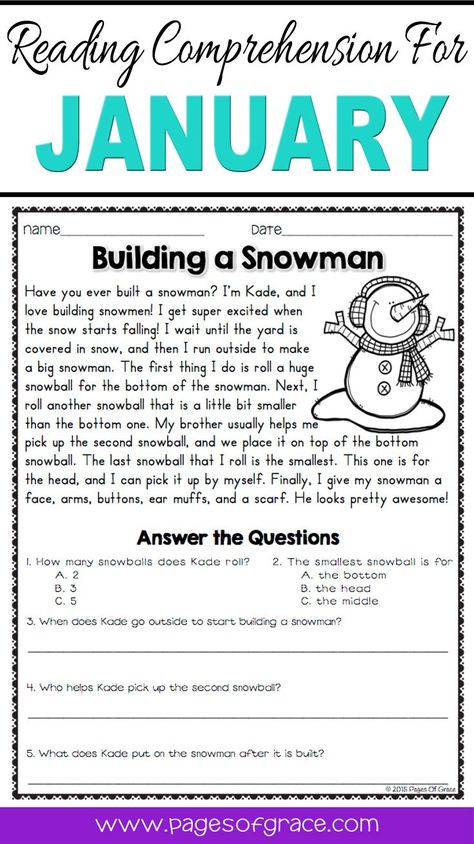 The exercise is rather difficult, and memory, attention, and thinking are involved. The skill of semantic reading is being improved. At first, you need to choose familiar texts, better - fairy tales.
The exercise is rather difficult, and memory, attention, and thinking are involved. The skill of semantic reading is being improved. At first, you need to choose familiar texts, better - fairy tales.
“The word is lost”
What should be done? We read the text aloud, skipping words. The child must understand which word was missed.
Target . The exercise contributes to the development of attention, the formation of the skill of semantic guessing and a deeper understanding of what is read.
"First and last"
What should I do? The child reads the text, saying aloud only the first and last letters in the word. Then he should tell what he read about.
Purpose. The exercise trains concentration and quick switching of attention, teaches you to perform several actions at the same time: read, understand, memorize.
Head-tail
What should I do? Option 1.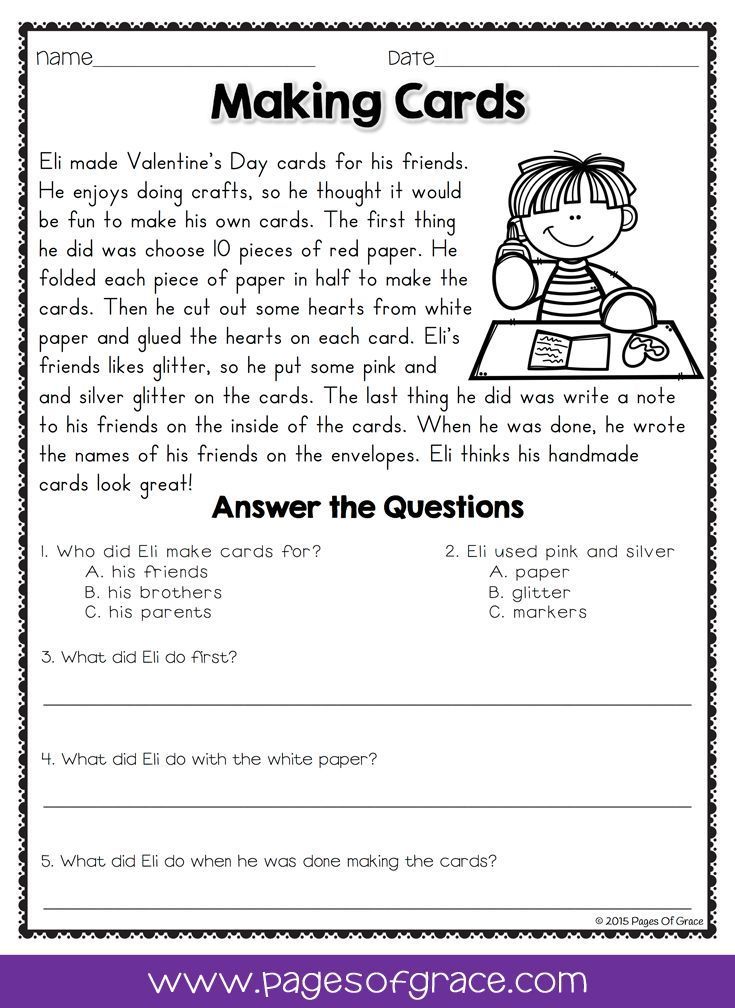 An adult reads the beginning of a word, and the child must find the "tail", that is, the end of this word. To do this, you need to quickly scan the entire text, find the word and read the ending.
An adult reads the beginning of a word, and the child must find the "tail", that is, the end of this word. To do this, you need to quickly scan the entire text, find the word and read the ending.
Option 2. An adult reads the beginning of the sentence, and the child must find its ending.
Purpose. This is a good training for the skills of "scanning" the text with the eyes, concentration and semantic reading.
"Read and count"
What to do? The child must not only read and understand the text, but also count the words. Naturally, for starters, you need small texts - from 10-20 to 40-50 words.
Purpose. This exercise helps to develop attention and better understand the text.
Shooting a movie
What to do? We invite the child to imagine a movie in his mind based on the text. We help with leading questions, find out what he sees and feels when he reads.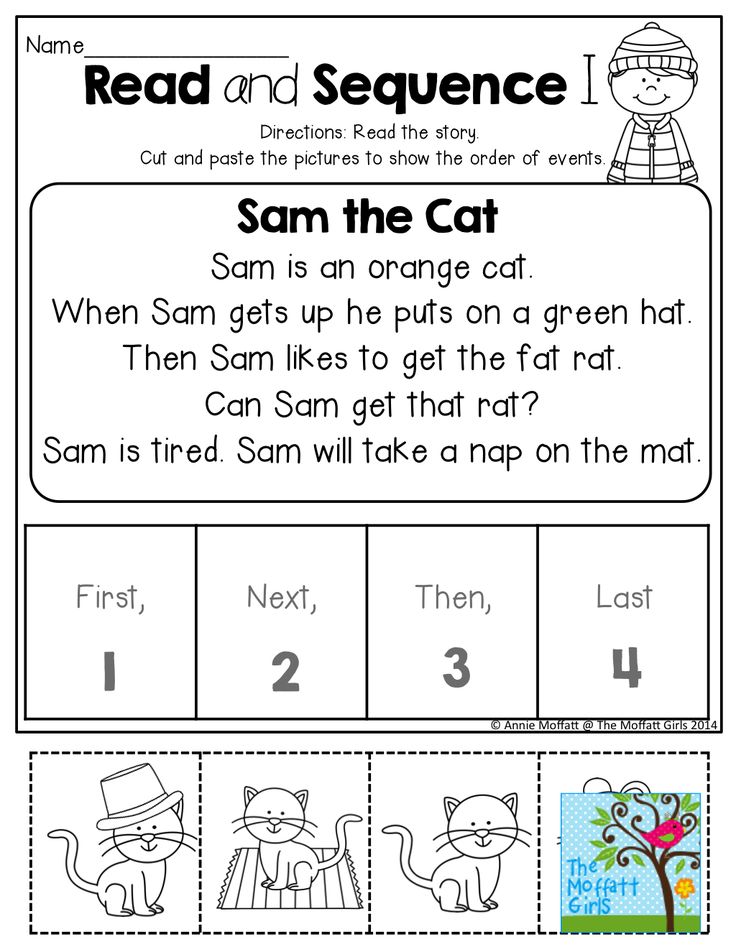 The task is not only to understand what the text is about, but also to hear sounds, feel smells, tastes, and experience the emotions of the characters. The child must answer your questions and retell the text.
The task is not only to understand what the text is about, but also to hear sounds, feel smells, tastes, and experience the emotions of the characters. The child must answer your questions and retell the text.
Purpose. We develop figurative memory, speech, retelling skill. Thanks to the use of the method of co-sensation, children easily remember and tell the text with all the details, even come up with details.
G. Abdulova "We read after the ABC: we develop speed reading"
It is important to teach a child to read correctly. The book by an experienced neuropsychologist, speed reading trainer and head of the Superbrain School of Intellectual Development Gyuzel Abdulova contains interesting and fun exercises that will help a child learn to read fluently without mistakes and hesitations. And although this book is designed for children of primary school age, it will certainly be interesting for parents to study: try to quickly read the text upside down or find a few words in a whole sea of scattered letters.